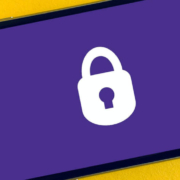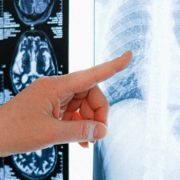3 reasons to invest in digital identity security
Our world is increasingly digitized and in many areas only takes place online. This also increasingly applies to our everyday working lives; companies are networked in the cloud thanks to communication and collaboration tools. Our systems such as CRM or ERP have also been outsourced to the cloud for better data availability. At the same time, questions are now increasingly being asked about the best possible protection for this outsourced infrastructure. It has become clear that VPN and virus protection alone are no longer sufficient to reliably protect your company’s IT from unauthorized access.
For this reason, you should definitely consider—if you haven’t already done so—meaningful identity management and deeper protection of your employee identities. This includes the question of how your employees can digitally identify themselves. So they can protect themselves from misuse of their own identity and its consequences. We’ve rounded up 3 key reasons why you should invest in digital identity security in your organization now, at the latest.
Secure tomorrow’s workplace today
The future is digital—that also means remote! True, remote work has existed before 2020. But 2020 was a booster for faster digitization in office applications. “Digital-only” therefore already applies to collaboration and communication. Despite the misgivings of many companies, employees have coped surprisingly well with this. They have quickly learned to anticipate these new ways of working and reap the benefits for themselves. But this is only part of the story. Although the introduction of communication and collaboration tools has been well received, network security and, in particular, the safeguarding of employee identities have often been neglected. The priority was to get operationally up and running quickly; thinking about IT security was a second step if it was thought about at all.
Yet the shift of (working) life to the digital world has created the perfect conditions for cybercrime. Phishing and social engineering attacks on companies have increased as a result of the crisis. By introducing a second factor to secure applications, they prevent identity misuse. After all, only those who can identify themselves twice—with a 2nd factor known only to them—will ultimately gain access to a file or system. Sensible and restrained access management also ensures that only those employees who really need access to sensitive areas of your corporate IT have it.
Improved usability increases employee satisfaction
Today, we expect a high level of usability and a consistent user experience with our applications. No longer just in our private lives, but also in the applications we use at work. Passwordless login increases the productivity and acceptance of your employees: because they don’t have to remember a multitude of complex passwords and can log on to their PC and applications with a single click. The combination of a multifactor authentication solution with single sign-on functionality allows fast, convenient, and uninterrupted switching between different applications. Without compromising on security.
Simplify your compliance processes
Centralized management of user identities and simplified login via single sign-on increase the productivity and effectiveness of your employees in the long term. Lengthy processes for (repeated) logins to individual applications and mandatory password changes in specific cycles are eliminated. Life is also easier for your administrators, who can dispense with complex password policies and the need to control them. Even a simple, insecure password has become a secure login with the highest security requirements through MFA.
At the same time, with a sensible Identity and Access Management and a secure multifactor authentication method, you introduce an important milestone to protect your corporate compliance. After all, the theft of (employee) identities poses a profound threat to your company; the compromise of your IT landscape and the possible associated data loss can be followed by data protection lawsuits and corporate compliance investigations. These are often more expensive than the actual damage caused by lost productivity.







 HWS Gruppe
HWS Gruppe
